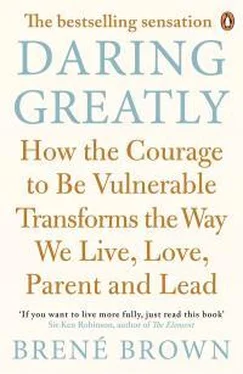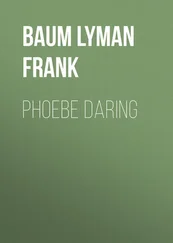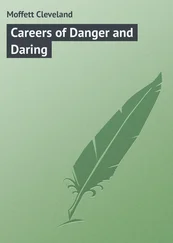At work, very unwilling if criticism, judgment, blame, or shame was possible. Taking emotional risks with the people I love was always mired in fear of something bad happening—a total joy killer that we’ll explore in the “Armory” chapter.
This questioning process helps because, as you can see from my answers, regardless of our willingness to do vulnerability, it does us. When we pretend that we can avoid vulnerability we engage in behaviors that are often inconsistent with who we want to be. Experiencing vulnerability isn’t a choice—the only choice we have is how we’re going to respond when we are confronted with uncertainty, risk, and emotional exposure. As a huge fan of the band Rush, this seems like the perfect place to throw in a quote from their song “Freewill”: “If you choose not to decide, you still have made a choice.”
In Chapter 4 we’ll take a closer look at the conscious and unconscious behaviors we use to protect ourselves when we believe we’re “not doing vulnerability.”
MYTH #3: VULNERABILITY IS LETTING IT ALL HANG OUT
One line of questioning that I often get is about our “let it all hang out” culture. Can’t there be too much vulnerability? Isn’t there such a thing as oversharing? These questions are inevitably followed by examples from celebrity culture. What about when Movie Star X tweeted about her husband’s suicide attempt? Or what about reality TV stars who share the intimate details of their lives and their children’s lives with the world?
Vulnerability is based on mutuality and requires boundaries and trust. It’s not oversharing, it’s not purging, it’s not indiscriminate disclosure, and it’s not celebrity-style social media information dumps. Vulnerability is about sharing our feelings and our experiences with people who have earned the right to hear them. Being vulnerable and open is mutual and an integral part of the trust-building process.
We can’t always have guarantees in place before we risk sharing; however, we don’t bare our souls the first time we meet someone. We don’t lead with “Hi, my name is Brené, and here’s my darkest struggle.” That’s not vulnerability. That may be desperation or woundedness or even attention-seeking, but it’s not vulnerability. Why? Because sharing appropriately, with boundaries, means sharing with people with whom we’ve developed relationships that can bear the weight of our story. The result of this mutually respectful vulnerability is increased connection, trust, and engagement.
Vulnerability without boundaries leads to disconnection, distrust, and disengagement. In fact, as we’ll explore in Chapter 4, “letting it all hang out” or boundaryless disclosure is one way we protect ourselves from real vulnerability. And the TMI (too much information) issue is not even a case of “too much vulnerability”—vulnerability is bankrupt on its own terms when people move from being vulnerable to using vulnerability to deal with unmet needs, get attention, or engage in the shock-and-awe behaviors that are so commonplace in today’s culture.
To more effectively dispel the myth that vulnerability is a secret-sharing-free-for-all, let’s examine the issue of trust.
When I talk to groups about the importance of being vulnerable, there’s always a flood of questions about the need for trust:
“How do I know if I can trust someone enough to be vulnerable?”
“I’ll only be vulnerable with someone if I’m sure they won’t turn on me.”
“How can you tell who’s got your back?”
“How do we build trust with people?”
The good news is that the answers to these questions emerged from the data. The bad news is that it’s a chicken-or-the-egg issue: We need to feel trust to be vulnerable and we need to be vulnerable in order to trust.
There is no trust test, no scoring system, no green light that tells us that it’s safe to let ourselves be seen. The research participants described trust as a slow-building, layered process that happens over time. In our family, we refer to trust as “the Marble Jar.”
In the middle of third grade, Ellen had her first experience with betrayal. In many elementary school settings, third grade is a big move. Students are no longer clustered with the K–2 crowd; they’re now navigating the Grade 3–5 group. During recess, she had confided in a friend from her class about a funny, slightly embarrassing thing that had happened to her earlier in the day. By lunchtime, all of the girls in her peer group knew her secret and were giving her a hard time. It was an important lesson, but also a painful one, because up to that point she had never considered the possibility that someone would do that.
When she came home, she burst into tears and told me that she was never going to tell anyone anything again. Her feelings were so hurt. Listening, I felt my heart aching for her. To make matters worse, Ellen told me that the girls were still laughing at her when they returned to the classroom, so much so that her teacher separated them and took some marbles out of the marble jar.
Ellen’s teacher had a large, clear glass vase that she and the kids referred to as “the marble jar.” She kept a bag of colored marbles next to the jar, and whenever the class was collectively making good choices, she would throw some marbles into the jar. Whenever the class was acting out, breaking rules, or not listening, the teacher would take marbles out of the jar. If and when the marbles made it to the top of the jar, the students would be rewarded with a celebration party.
As much as I wanted to pull Ellen close and whisper, “Not sharing with those girls is a great idea! That way they’ll never hurt usyou again,” I put my fears and anger aside, and started trying to figure out how to talk to her about trust and connection. As I was searching for the right way to translate my own experiences of trust, and what I was learning about trust from the research, I thought, Ah, the marble jar. Perfect .
I told Ellen to think about her friendships as marble jars. Whenever someone supports you, or is kind to you, or sticks up for you, or honors what you share with them as private, you put marbles in the jar. When people are mean, or disrespectful, or share your secrets, marbles come out. When I asked her if it made sense, she nodded her head with excitement and said, “I’ve got marble jar friends! I’ve got marble jar friends!”
When I asked her to tell me about it, she described four friends whom she could always count on, who knew some of her secrets and would never tell, and who told her some of their secrets too. She said, “These are the friends who ask me to sit with them, even if they’ve been asked to sit at the popular kids’ table.”
It was such a great moment for both of us. When I asked her how her marble jar friends became marble jar friends, she thought about it for a minute and replied, “I’m not sure. How did your marble jar friends get their marbles?” After thinking about it for a while, we both started blurting out our answers. Some of hers were:
They keep our secrets.
They tell us their secrets.
They remember my birthday!
They know who Oma and Opa are.
They always make sure I’m included in fun things.
They know when I’m sad and ask me why.
When I miss school because I’m sick, they ask their moms to call to check on me.
And mine? Exactly the same (except for me, Oma and Opa are Deanne and David, my mom and stepdad). When my mom comes to Ellen or Charlie’s events, it’s a great feeling to hear one of my friends say, “Hey, Deanne! Good to see you.” I always think, She remembered my mom’s name. She cares. She’s paying attention.
Trust is built one marble at a time.
Читать дальше






![Брене Браун - Вопреки. Как оставаться собой, когда всё против тебя [litres]](/books/436389/brene-braun-vopreki-kak-ostavatsya-soboj-kogda-v-thumb.webp)





